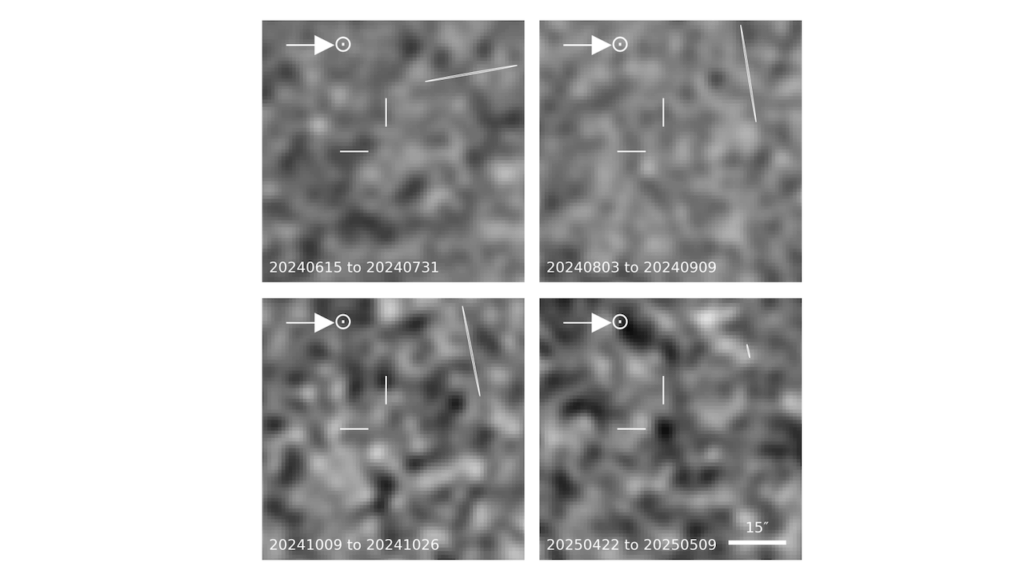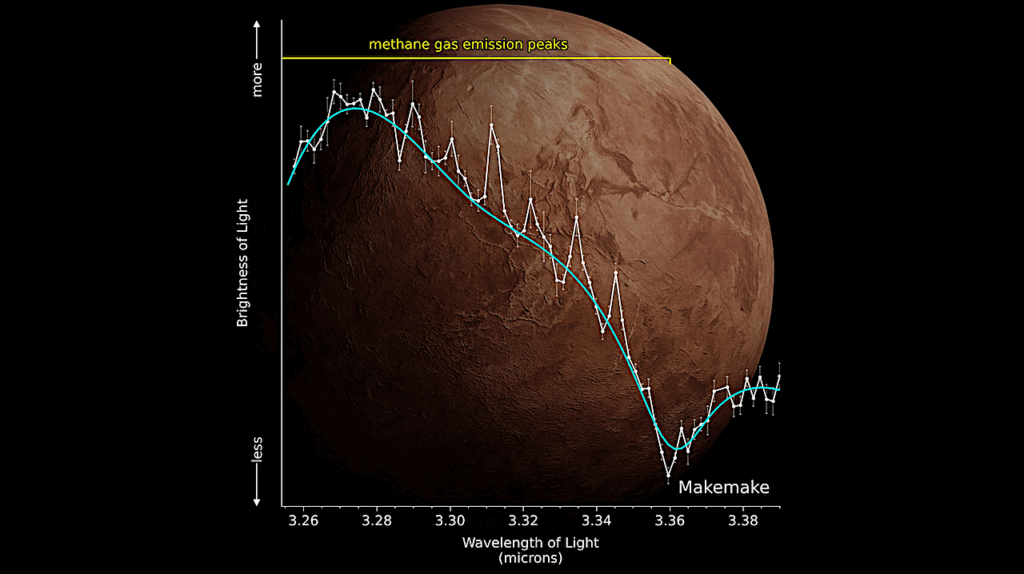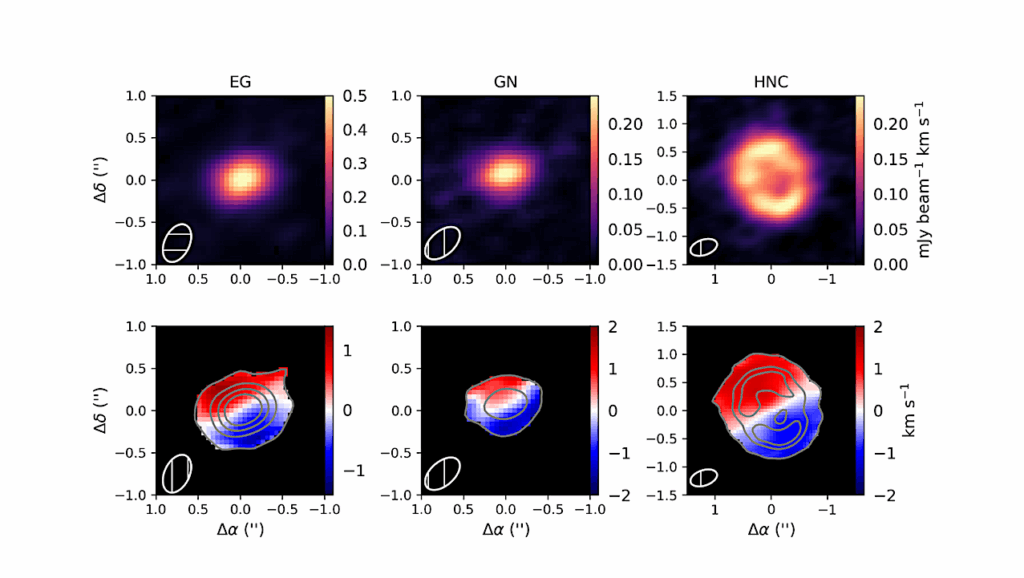Chemically Tracing The Water Snowline In Protoplanetary Disks With HCO+

Planet formation is expected to be enhanced around snowlines in protoplanetary disks, in particular around the water snowline. However, the close proximity of the water snowline to the host star and water in the Earth’s atmosphere makes a direct detection of the water snowline in protoplanetary disks challenging.
Following earlier work on protostellar envelopes, the aim of this research is to investigate the validity of HCO+ and H13CO+, as tracers of the water snowline in protoplanetary disks, as HCO+ is destroyed by gas-phase water. Two small chemical networks are used to predict the HCO+ abundance in a typical Herbig Ae disk. Subsequently, the corresponding emission profiles are modelled for H13CO+ and HCO+ J=2−1, which provides the best balance between brightness and optical depth effects of the continuum emission. The HCO+ abundance jumps by two orders of magnitude just outside the water snowline at 4.5 AU. We find that the emission of H13CO+ and HCO+ is ring-shaped due to three effects: destruction of HCO+ by gas-phase water, continuum optical depth, and molecular excitation effects.
The presence of gas-phase water causes an additional drop of only ∼13% and 24% in the center of the disk, for H13CO+ and HCO+, respectively. For the much more luminous outbursting source V883Ori, our models predict that the effect of dust and excitation are not limiting if the snowline is located outside ∼40 AU. Our analysis of ALMA observations of HCO+ J=3−2 is consistent with the water snowline located around 100 AU. The HCO+ abundance drops steeply around the water snowline, but dust and excitation can conceal the drop in HCO+ emission due to the water snowline. Therefore, locating the water snowline with HCO+ in Herbig disks is very difficult, but it is possible for outbursting sources like V883Ori.
M. Leemker (1), M. L. R. van ‘t Hoff (1 and 2), L. Trapman (1), M. L. van Gelder (1), M. R. Hogerheijde (1 and 3), D. Ruíz-Rodríguez (4), E. F. van Dishoeck (1 and 5) ((1) Leiden Observatory, Leiden University, (2) University of Michigan, Department of Astronomy, (3) Anton Pannekoek Institute for Astronomy, University of Amsterdam, (4) National Radio Astronomy Observatory, (5) Max-Planck-Institut für Extraterrestrische Physik)
Comments: Accepted for publication in Astronomy and Astrophysics. 13 pages, 11 figures + appendices
Subjects: Earth and Planetary Astrophysics (astro-ph.EP); Solar and Stellar Astrophysics (astro-ph.SR)
Cite as: arXiv:2011.12319 [astro-ph.EP] (or arXiv:2011.12319v1 [astro-ph.EP] for this version)
Submission history
From: Margot Leemker
[v1] Tue, 24 Nov 2020 19:00:13 UTC (6,342 KB)
https://arxiv.org/abs/2011.12319
Astrobiology, Astrochemistry







